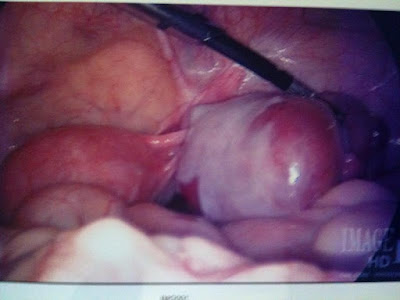J Pediatr Gastroenterol Nutr. 2010 May;50(5):537-544.
Supplementation With Fatty Acids Influences the Airway Nitric Oxide and Inflammatory Markers in Patients With Cystic Fibrosis.
Keen C, Olin AC, Eriksson S, Ekman A, Lindblad A, Basu S, Beermann C, Strandvik B.
*Departments of Pediatrics, Sweden daggerOccupational and Environmental Medicine, Sahlgrenska Academy, University of Gothenburg, Gothenburg, Sweden double daggerDepartment of Public Health and Caring Sciences, Faculty of Medicine, Uppsala University, Uppsala, Sweden section signDanone Research, Centre for Specialized Nutrition, Friedrichsdorf, Germany.
Abstract
OBJECTIVES:: To obtain a balance in the fatty acid (FA) metabolism is important for the inflammatory response and of special importance in cystic fibrosis (CF), which is characterized by impaired FA metabolism, chronic inflammation, and infection in the airways. Nitric oxide (NO) has antimicrobial properties and low nasal (nNO) and exhaled NO (FENO), commonly reported in CF that may affect bacterial status. The present study investigates the effect of different FA blends on nNO and FENO and immunological markers in patients with CF.
PATIENTS AND METHODS:: Forty-three patients with CF and "severe" mutations were consecutively enrolled in a randomized double-blind placebo-controlled study with 3 FA blends containing mainly n-3 or n-6 FA or saturated FA acting as placebo. FENO, nNO, serum phospholipid concentrations of FA, and biomarkers of inflammation were measured before and after 3 months of supplementation.
RESULTS:: Thirty-five patients in clinically stable condition completed the study. The serum phospholipid FA pattern changed significantly in all 3 groups. An increase of the n-6 FA, arachidonic acid, was associated with a decrease of FENO and nNO. The inflammatory biomarkers, erythrocyte sedimentation rate, and interleukin-8 decreased after supplementation with n-3 FA and erythrocyte sedimentation rate increased after supplementation with n-6 FA.
CONCLUSIONS:: This small pilot study indicated that the composition of dietary n-3 and n-6 FA influenced the inflammatory markers in CF. FENO and nNO were influenced by changes in the arachidonic acid concentration, supporting previous studies suggesting that both the lipid abnormality and the colonization with Pseudomonas influenced NO in the airways.
We are here to extend our lives by THINKING DIFFERENT
Tuesday, July 20, 2010
Thursday, July 15, 2010
Tweeting my CF Routine for Raise CF Awareness
Today, throughout the day, I am tweeting my Cystic Fibrosis routine to raise CF awareness.
If you don't already follow me on Twitter, I'm @CFResearch.
Yey for CF awareness!
If you don't already follow me on Twitter, I'm @CFResearch.
Yey for CF awareness!
Tuesday, July 13, 2010
Cayston Update ****WARNING: MUCUS PICTURES*******
*********WARNING: MUCUS PICTURES***************


After about 2 doses of Cayston, I coughed up this sucker (see below. that finger is my index finger, btw)
I am definitely a plug-cougher-upper, but rarely do I get suckers this big. The last one of this size was when I was on prednisone in February/March.
So, is it related to Cayston? I'm not sure. But that's the only thing that has changed.
Now that I've been on Cayston for 3 days, my mucus has definitely thinned, decreased in quantity and lightened in color. So we'll see how things continue to go :)




Picture of my appendix

Hey guys,
It's been 5 weeks since I had my appendix removed and I forgot that I never posted a pic of my appendix from surgery.
They also took a pic of my ovary for good measure, so I'll include both on this blog post :)

To me, the appendix looks like a slug with an eye on it!
I still don't know which part is my ovary in this picture... but something looks like it's wrapped in cheese - maybe that's it?
Anyway, I was greatful to my surgeon who took these pics for me - I asked for the actual appendix but she said it had to go straight to pathology. Boooo!
Hope you all aer well :)
Saturday, July 10, 2010
First dose of Cayston
Well, I'm happy to report that I'm in the middle of my very first dose of Cayston.
Here is what I see as the good, the bad, and the ugly:
The Good
Here is what I see as the good, the bad, and the ugly:
The Good
- Unique class of nebulized antibiotic for the CF population
- FDA approved (although I don't have much issue with my Colistin not being FDA approved for nebbing - we CFer's do things off label all the time... actually since my FEV1 is greater than 75% my use of Cayston is off label....)
- Used through the eFlow (you all know what a fan I have been of the eFlow... been using it since 2006)
- Pretty quick nebulzation time
The Bad
- Tastes a bit like TOBI - I haven't been on TOBI since about 2004 and I don't miss the taste. Oh well - not that big of a deal
- Stuff has to be refrigerated (but technically the PI says once the meds have been removed from the fridge, meds can remain at room temp for 28 days)
- Stuff has to be mixed (Just one extra step I'll have to do in my car during my mid-day dose.... more on that later)
The Ugly
- I nearly sliced my finger open trying to get the metal flap and metal ring off the cayston vial. WOW FDA and GILEAD - you thought this was safe?! Good grief
- 3x a day dose.... WOW. Yes, 4 hours apart is OK. Sure, I get that. But wow - for those of us who work (and even those who don't), this is a very difficult routine to get in to. I have put reminders in my iPhone and work Blackberry to doubly remind me mid-day to do my Cayston. Or else I'll forget. BLEH
Given this is my 1st dose, I might have more to add to the Good and the Bad, depending upon how the med makes me feel :) I"ll keep you posted.
Overall, I'm super happy that the CF Community has another option to treat PA!
Subscribe to:
Posts (Atom)